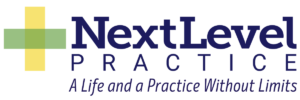Dreading tax season? Luckily there are proven steps you can take throughout the year to mitigate your taxes before your CPA even fills out the first form in the new year. These three tax hacks will help you take control of your tax strategy so you can save more of your hard-earned money on your 2022 taxes next year…and every year after.
Tax Hack #1: Find the Right CPA
Did you know that there are three types of CPAs, and only one of them can save you money when tax time rolls around each year? Your first tax hack is to find the right CPA to achieve your goals. That begins with understanding the three most common types of CPAs dentists hire to help them with their finances.
1. Bean Counter:
A bean counter is a competent accountant — and that’s it. They operate solely as a person you can send your P&Ls to and they’ll let you know what you owe, nothing more, nothing less. A lot of dentists use bean counters because if it ain’t audited, don’t fix it. You may be safe, but you aren’t saving!
2. Reactive:
A reactive accountant is helpful when it’s too late. They inform you about issues they discover while filing your taxes and provide you with vague information about how to manage your finances next year. Yes, the information may be beneficial (at least you now know what to fix), but it won’t save you money on your current tax bill.
3. Proactive:
A proactive CPA is a rockstar ally that helps you mitigate the impact of your taxes each year. They meet with you often, observing your P&Ls throughout the year to alert you to issues or help you strategize or adapt your tax strategy. They make sure your tax debt is paid and quarterly taxes are managed. Looking for ways to actively support their clients, they review new and existing tax laws to find safe, legal deductions and credits that save you money.
As you’ve probably guessed, we’re big fans of proactive CPAs. Kick off your tax-saving strategy by hiring a future-forward CPA who partners with you to help you save money all year long.
Tax Hack #2: The R&D Tax Credit
The R&D Tax Credit is a research and development tax credit that was established in 1981 to stimulate innovation in the United States. It was also designed to support businesses in improving existing techniques or experimenting with new technologies and processes. While it is perfectly natural to assume that the credit is limited to the IT or pharmaceutical industries, the actual applications of research and development are relevant in a variety of industries, including dentistry. Here are a few ways your dental practice may already be implementing research and development as codified in the R&D tax credit:
- Developing complex patient procedures
- In-house laboratories or on-site milling
- Improving processes, techniques or methodology within your practice
- Creating or testing prototypes related to dentistry
When conducting any of these procedures, you gain the ability to mitigate qualifying expenses such as:
- Wages
- Supplies
- Select equipment and technology expenses
- Contractor expenses
The R&D Tax Credit can have a significant impact on your taxes because it directly decreases the amount of taxes owed (or, in the case of some newer practices and struggling businesses, increases the amount of your tax return). Connect with your CPA to find out if this credit can be applied in your business. If they say no without even assessing your data, get a second opinion.
Want to learn more about the R&D tax credit or any of these tax hacks? Check out our most recent webinar with Dental Economics where we discuss these issues in depth.
Tax Hack #3: The ERC
The Employee Retention Credit was established as part of the CARES Act to provide relief to businesses struggling during the height of the pandemic. The newest iteration of the credit offers big benefits for qualifying dental practices. Even better, there are a surprising number of dentists who may qualify.
Who qualifies:
- If you lost 20% of gross receipts comparing a quarter of 2021 to the same quarter of 2019
- If you had to shut down partially or fully for a period of time for any government order (city, state, federal), you might qualify for that period of time
How you can benefit:
- 70% of the first $10,000 in wages per employee ($7,000 per employee)
- For each of the three quarters of 2021 through September of 2021, you may be eligible for $21,000 per employee
- File a 941x (you may have to amend a return)
- You can go back up to three years after you file a tax return or two after you pay taxes
Contact your accountant or tax attorney to learn more about your options. As with the research and development credit discussed above, the Employee Retention Credit is deducted from the taxes you owe, not from your income before taxes are calculated.
The tax man cometh — but you don’t have to let him take everything with him when he leaves! You still have time to act on these options before your taxes are due. These three tax hacks can help you mitigate the impact the IRS has on your practice. You’ll ear after year.
Want more tips and coaching like this delivered to your inbox each week? Subscribe to our Morning Huddle Motivator for more ideas and inspiration for taking your practice to the next level.






